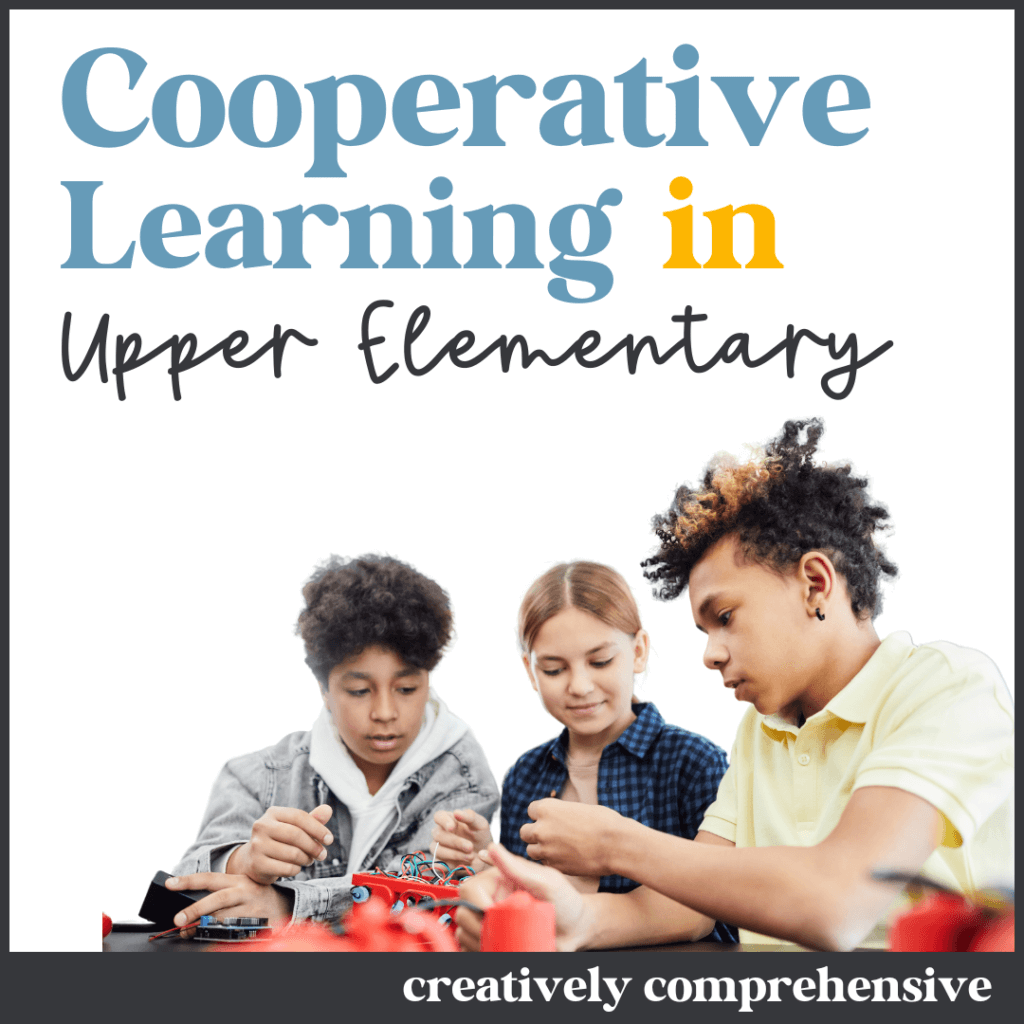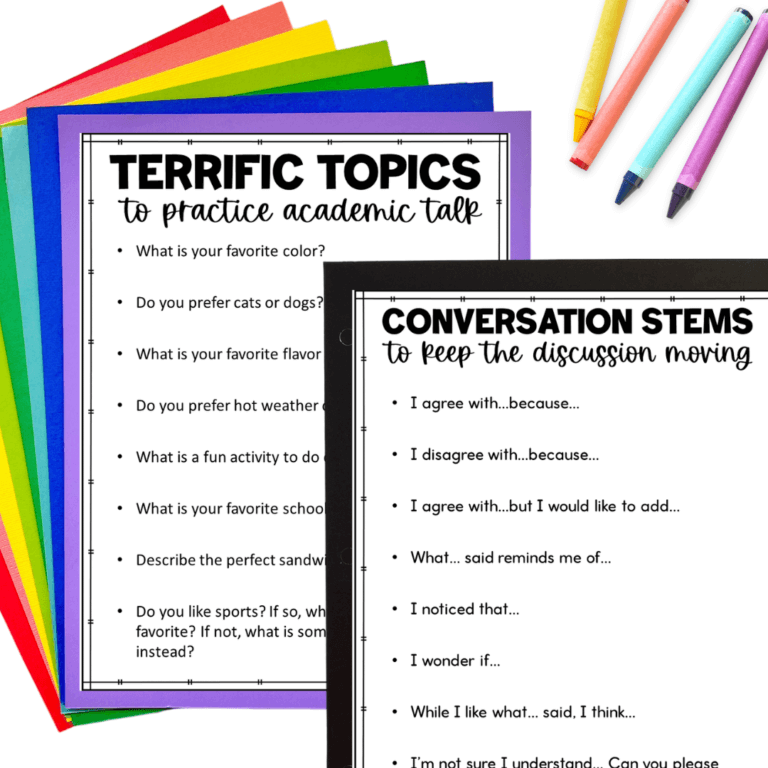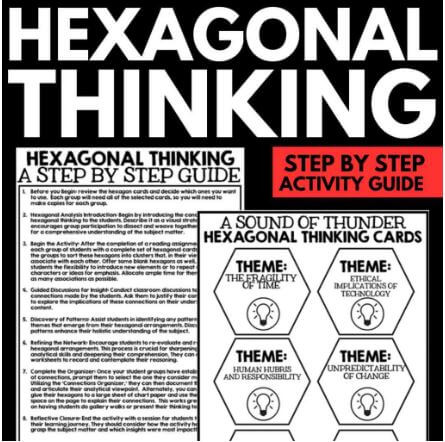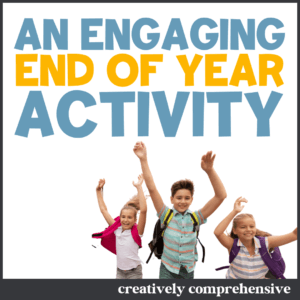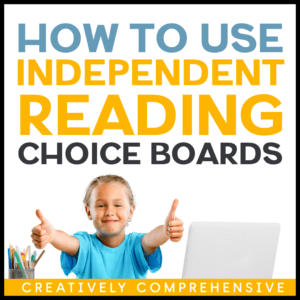by Marianna Monheim, Rissa Hanneken, Jennifer Martinez, and Marissa Despins updated July 8, 2024
Collaborative Learning Can Be Effective: Here's How
Collaborating and working with others is an essential skill for upper elementary students to learn. However, many teachers shy away from cooperative learning activities in their classrooms. If you’re one of those teachers, you’ve come to the right place! I’ve teamed up with some experienced educators to share some cooperative learning strategies that work for upper elementary students.
Interested in learning more about facilitating academic conversations? Check out my free eBook here!
Table of Contents
Provide Structure and Scaffolding
Here’s a common mistake teachers make when starting out with cooperative learning activities: They assume that because students love to talk, they will naturally do well with collaborative activities. I’ll admit I made this error more than once in my teaching career!
The thing is, academic conversations and social conversations require two different skill sets, and many upper elementary students don’t have much experience with the former! This leads to teachers becoming frustrated during cooperative learning activities. Everyone’s talking, but no work is getting done.
The key? Scaffold, scaffold, scaffold! Practice having structured conversations first as a whole class, then in groups. Monitor closely as students are talking. This way, they’ll know that group work isn’t synonymous with playing around.
These first conversations don’t have to be about heavy academic topics. Let students get used to taking turns while speaking with topics that are easier to digest. You can grab a set of questions by clicking on the picture or button below!
More Ideas for Collaborative Conversations
If you are looking for ways to boost your students’ reading comprehension Rissa from Teaching in the Heart of Florida has some great cooperative learning strategies for upper elementary classrooms. These strategies make learning more fun and help students understand texts better through group discussions and peer interactions. Using these methods, students can actively participate, see different viewpoints, and improve their communication skills.
One of Rissa’s favorite strategies is Think-Pair-Share. Students first ponder a question independently, allowing them to formulate their own thoughts. Then, they team up with a partner to discuss their interpretations. This discussion allows them to bounce ideas off each other, clarify understanding, and potentially learn from different perspectives. This strategy is easy to implement and can be used over and over. Another favorite strategy Rissa recommends is Reciprocal Teaching. Here, small groups take turns leading the charge in class discussions. They might use techniques like summarizing key points or predicting what might happen next in the story. This approach keeps everyone engaged as they actively think about the text while gaining critical thinking and analysis skills. Check out Rissa’s blog post, 5 Collaborative Learning Strategies That Enhance Reading Comprehension, for more ideas.
Cooperative Learning Projects
Creating engaging and meaningful collaborative projects doesn’t have to be overwhelming. There are several ways these projects can be as rewarding for you as they are for your students. The first is to integrate multiple disciplines. When planning a collaborative project, think of one that incorporates several subjects. For instance, a project might combine science with art or history with technology. This interdisciplinary approach helps students see the connections between different areas of knowledge and provides you with a more complete picture of students’ understanding.
Jennifer of everything just so has several more practical tips for implementing engaging collaborative projects with your upper elementary students. Find all of them here.
Using Hexagonal Thinking to Promote Cooperative Learning
Collaborative learning strategies in upper elementary are crucial because they foster teamwork, communication, and problem-solving skills. By working together, students learn to appreciate diverse perspectives, share knowledge, and build on each other’s ideas, which enhances their understanding and retention of the material. These strategies also promote social interaction and empathy, essential for their overall development and future success.
Marissa from Creative Classroom Core loves using Hexagonal Thinking activities to encourage students to work together in the classroom. Hexagonal Thinking is an innovative instructional strategy that promotes deep understanding and connections among ideas, concepts, or pieces of knowledge. It involves the use of hexagonal cards, each with a single idea, term, character, or quote. Participants then work individually or in groups to arrange these hexagons in a way that visually represents the connections they see. This method encourages critical thinking, collaboration, and the synthesis of ideas. Because of this, it is particularly effective in the literature classroom where understanding relationships between themes, characters, and events is really important.
Read more about Hexagonal Thinking, and ways you can use it in your classroom, on the Creative Classroom Core blog!

